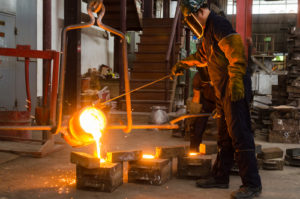Injection molding is a widely accepted manufacturing method that finds use in situations where parts are produced in large volume. Mass-production processes employ this form of molding to create the same parts in repeated succession, up to thousands of times, or even millions. The repeatability is what makes this process so appealing with regard to consistency – any part looks almost the exact same as the original. When thousands or millions of parts need to be manufactures, this process beats every type of die casting in Los Angeles.
Injection molding is widely preferred over traditional manufacturing processes such as CNC machining, mainly for the fact that it carries low scrap rates. Relatively plastic gets cut away in this process. The waste plastic comes chiefly from four sources: the runners, the sprue, the gate locations, and the overflow material. The last is what leaks directly from the part cavity after a part has been removed. However, injection molding does have its downsides. The main problem is that of high upfront costs, which are steep because of the requirement for testing, design, and tooling.
When producing parts in high numbers, it is pertinent to ensure that the design used is as close to perfect as it can get. This may sound simple, but it is not; in fact, it requires the following things.
- Designing the part, and then prototyping it to specification: The initial prototype is developed using a #D printer, and in a much different material, like ABS plastic for example. The final part gets made out of a totally different substance.
- Designing a mold tool for use in the initial production round: A new injection mold tool is required for the first production phase, which can generate between 300 and 1000 prototypes.
- Refining the details in the mold tool before mass production starts up at a manufacturing plant.
The Negative Sides to Injection Molding
The two main cons of injection molding are large required lead times, and high tooling costs. Tooling in and of itself is a significant project, and that still covers only a single phase of injection molding. You first need to make a prototype of the part, and then one of the mold tools capable of producing this part in high volumes. After that, the part is injection molded. Taken together, these stages require significant time and money just so you can ensure correctness before mass production starts up. Prototyping an injection molding tool is not unheard of; it is often done for parts intended as multi-cavity tools.

Disadvantages Of Injection Molding
The tools typically being steel or aluminum, making changes to them is usually hard. Space for adding plastic to the part could be achieved by clearing away aluminum or steel from the mold, and that is relatively easy. The opposite is hard though – to eliminate existing space meant for plastic, the tool cavity would need to be brought down in size by adding metal. Sometimes, the tool can end up getting scrapped, requiring you to start over. Metal can sometimes be welded into the cavity to make it smaller, but that does not a work.
Injection molding requires that the wall thickness stays uniform. Cutting a cross-section of a mold is supposed to give you the same thickness throughout, and to ensure this consistency, the cooling process needs to be regulated so that sink marks and other defects do not have a chance to form. Walls are best kept at or under 4 mm in thickness, because more than that and you would be using more material, waiting a longer cycle time, and paying more per part. Under 4 mm, and you risk a higher melt flow index.
What’s more, some parts cannot be injection molded as single pieces, owing to size limitations carried by mold machines and tools. Consider the shopping carts at Costco, which could actually be molded as single pieces, but would cost excessively high amounts. For this reason, they, as well as many other objects are created in parts. CNC machines carry similar limitations where product size is concerned, and 3D printers are even more limited.
Necessary Considerations
- Financial: The entry cost is an important factor, and usually entails a large investment. Production quantity is crucial as well, so you need to be sure of how many parts need to be made in order to achieve maximum cost effectiveness, and for breaking even.
- Design: The part needs to be designed from the start with injection molding as its foremost outcome. You need to simplify geometric measurements and cut down on the number of parts. Tool design too is important, and should be geared towards preventing defects during manufacture. There are plenty of common defects formed during injection molding, and reading up on them would definitely help.
